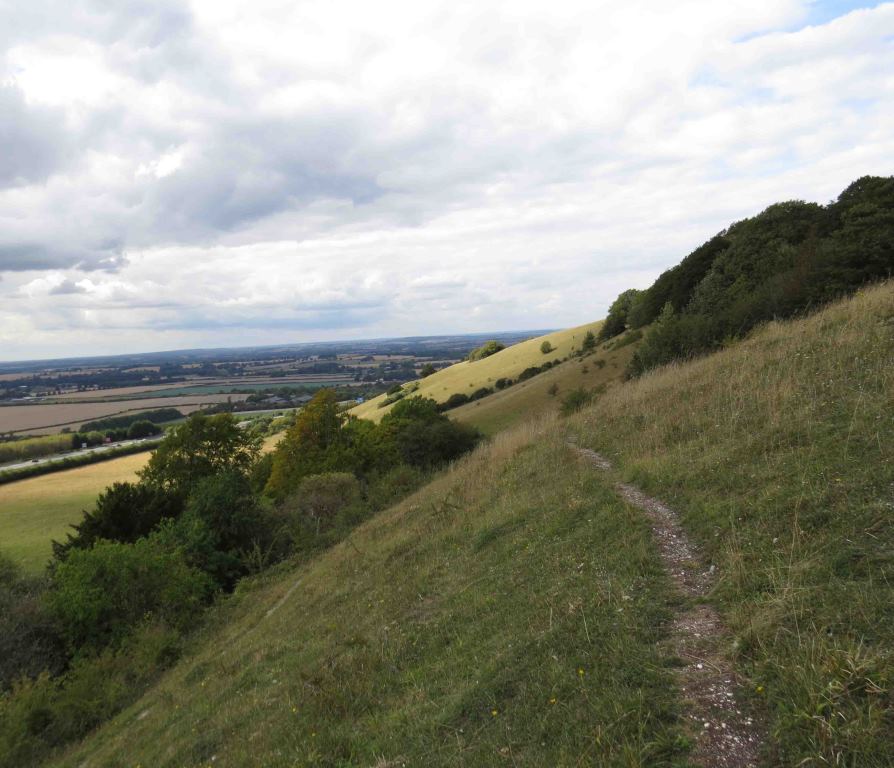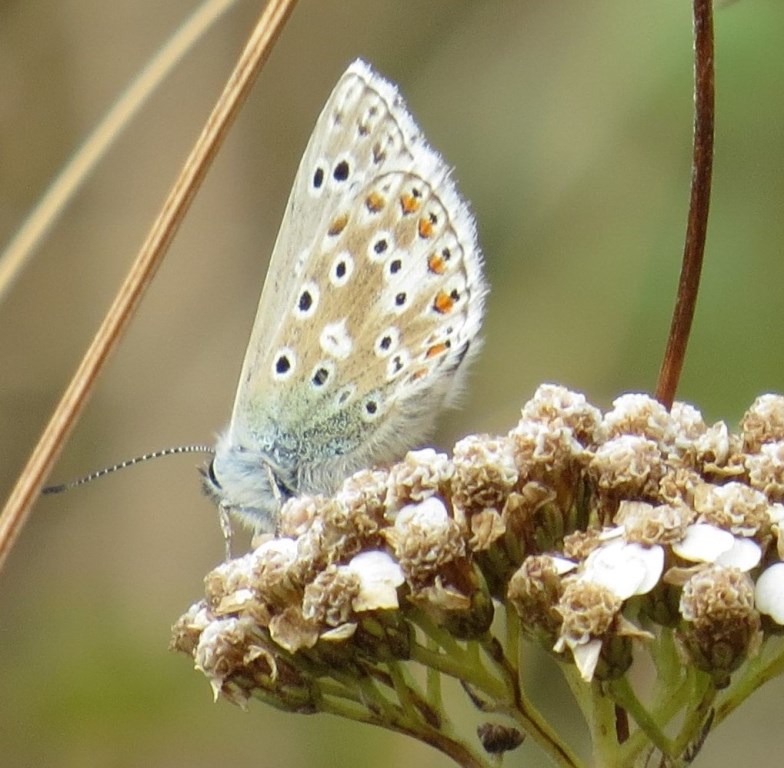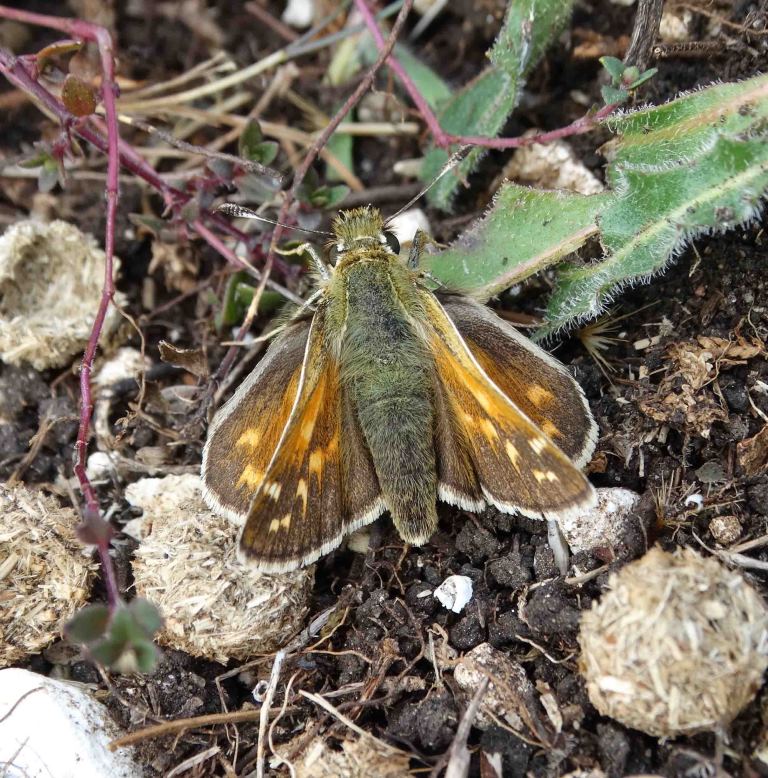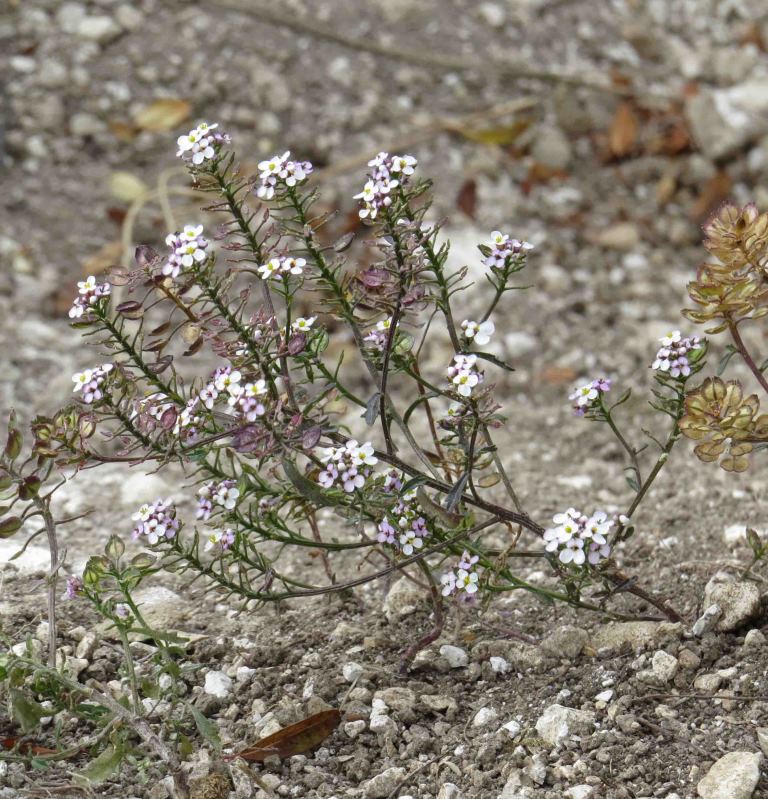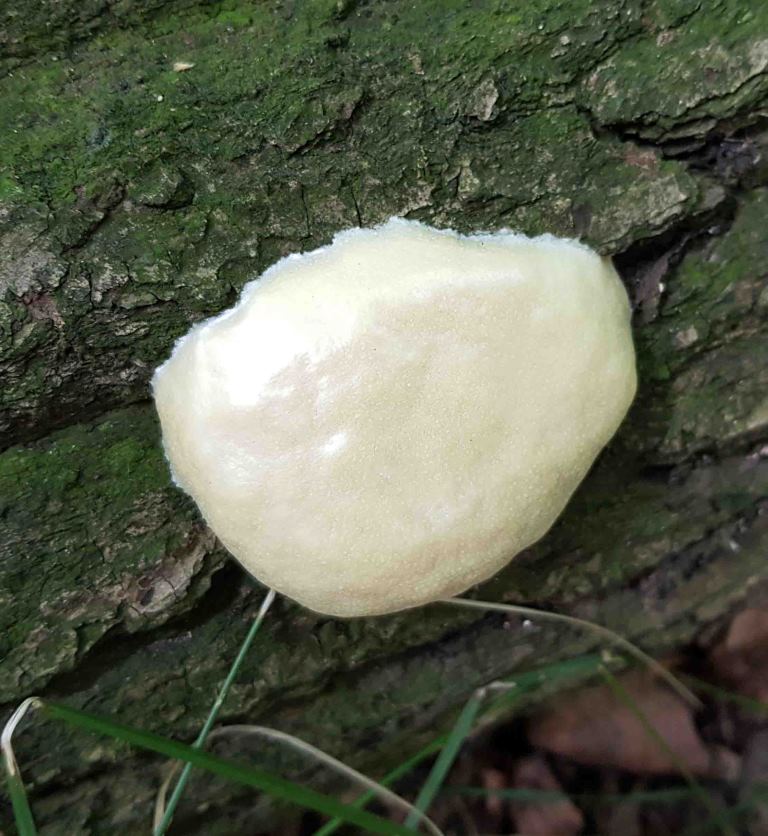Ian Esland led a walk round the northern section of Aston Rowant National Nature Reserve on Saturday 7 September. It was an afternoon of alternating sun and cloud, which turned out to be a bonus for the photographers because the butterflies were reluctant to fly when the sun was obscured. The walk started out across the steep side of Beacon Hill, with far-reaching views to the south-west, including the much-reduced Didcot power station, with just a single tall chimney remaining. Flowers seen here included Carline, Musk and Dwarf Thistle, Harebell, Small Scabious, Clustered Bellflower, Eyebright, Wild Marjoram and Wild Basil. A few Autumn Gentians were still in flower. A male Adonis Blue butterfly perched obligingly for the photographers, and several more blue males and a few brown females were seen soon after. Ian, who walks the butterfly transect, said that they had first been recorded at Aston Rowant about five years ago, but it was unclear if they had arrived naturally or had been unofficially released. They appear to be thriving. Also seen were a few Silver-spotted Skippers, which favoured patches of bare ground. Other butterflies included Meadow Brown, Small Heath, Painted Lady, Brown Argus and Small White and a Hummingbird Hawk-moth was spotted. A steep climb led to a large animal burrow near the top of the field. Several clumps of Wild Candytuft were flowering in the loose soil at the entrance to the hole. The route then led back down the hillside to the sunken trackway at the bottom. This is usually very sheltered and a butterfly hotspot – but unfortunately on this occasion the wind was funnelling along it and no butterflies were to be seen. Berries of Bittersweet and Black Bryony were found on the bank, together with some juicy Blackberries. The route continued up steps and round the side of Beacon Hill. There were Juniper bushes near the top, together with Blackthorn and Dogwood bushes, both laden with glossy black berries. A House Martin flew overhead and Linnets were heard. Along the north side of Beacon Hill is an arts trail. A Red Kite sculpture is positioned at one of the best view-points, looking out far to the north-west. Another installation features an audio recording of a fairy tale about Ring Ouzels, which visit on passage, read by local schoolchildren. Continuing into the woods, the round white slime mould Reticularia lycoperdon was found on a cut broad-leaved log and three Violet Helleborine plants were seen beside the track.
Aston Rowant NNR Adonis Blue Silver-spotted Skipper Hummingbird Hawk-moth Wild Candytuft Slime mould Reticularia lycoperdon
Pictures by Fiona Brown and Laurie Haseler

